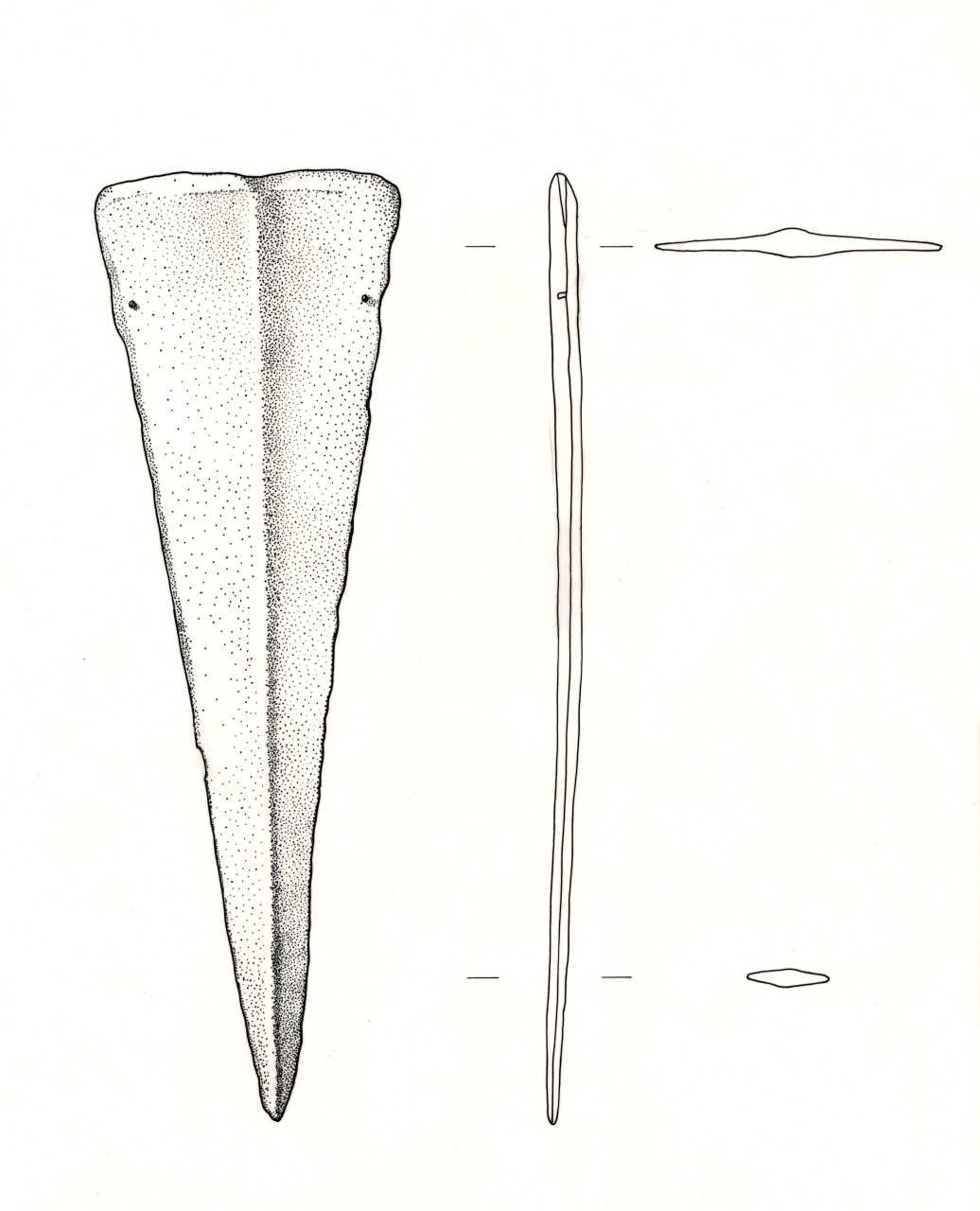
Triangular dagger blade with almost straight cutting edges
No. 13 (Inventory no. ABa 955). Triangular dagger blade with almost straight cutting edges, pronounced midrib and flat butt, slightly sunken in the middle. Two fine rivets (0, 18 cm in D). A burr from the moulding is seen at the top of the blade.
L (along the midrib): 19. 1 cm
Provenance: Melos. Bought by the philologist Mr. Pio in Melos in 1865/66.
Published: (Congres international d`Anthropologie et d`Archeologie prehistorique 1869 (Cph. 1875), 482). Montelius1924, Pl. 7, 4. Dietz 1971, 1 and Fig. 1.
Comments: Renfrew Tp. IVa (Renfrew 1967, 11). Renfrew considers Tp. IVa to be “the principal Aegean form”. Nine pieces from Amorgos are catalogued by Renfrew (54-62), furthermore there are parallels from Naxos, Crete and the Mainland, from Zygouries, Lerna and Levkas (Renfrew 1967, 11 (IVa), n. 21). DATING: The Syros/Keros phase in the Cyclades (Renfrew 1972, 517 and 522). The dating is based on daggers from Ormos Apóllonas in Naxos (Papathanasopoulos 1961/62 (1963), Pl. 77-78, gr. 38B) and a piece from Dokathismata gr. 14 in Amorgos (Tsountas 1898, 154, Pl. 12, 8. Bossert 1965, 92f and Abb. 2, 5). Very close parallels from Lebena, Crete Tomb II are dated “not later than EMII”) (Alexiou and Warren 2004, 136-37, figs. 36 and 121). Renfrew believes the type to have continued in later times. DISTRIBUTION: Crete and the Cyclades. Renfrew (1967) consider the type to be characteristic even for the Mainland.